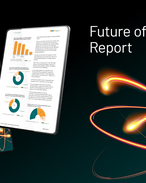This article is 18 years old. Images might not display.
The Vancouver-headquartered corporation yesterday announced it had secured enough gas to extend the operation of the Waitara Valley plant, which it closed briefly this year, only to reopen it in August, until at least the end of the 2007 first quarter.
Methanex New Zealand managing director Harvey Weake told PetroleumNews.net today that global inventories of methanol were extremely low due to planned and unplanned supply outages by several producers over the last few months.
“There have been outages around the world, across the industry, across all geographies,” Weake said from Auckland this morning. “In my 20-plus years in the industry, I have never encountered such a thing.
“We now have near-record prices and it’s new territory for the industry.”
He said that continuing to operate the valley plant, north of New Plymouth, would help ensure continued reliable supply to Methanex customers, particularly in the Asia-Pacific region, and would offset some of the current global supply shortages.
Industry sources say last Friday’s announcement by Contact Energy and Vector – that they had secured a total of 275 petajoules of additional Maui right of first refusal (ROFR) gas – was the signal for Methanex to conclude its own negotiations with Contact, Vector, or both companies, on Methanex using gas not needed by the two other players.
Contact’s gas-fired power stations use less fuel in summer and early autumn than at other times of the year. Similarly, gas usage profiles for some of Vector’s customers are also lower at these times, enabling Vector to on-sell some of its contracted gas.
High world contract methanol prices, currently about $US550 per tonne in the Asia-Pacific, are enabling Methanex to pay the higher market-priced ROFR gas and still run the valley plant profitably.
Weake confirmed that most of the additional new gas was “Maui-sourced”, including the remaining small allocation of ROFR gas for Methanex.
When Methanex restarted the valley plant in August, it said it intended operating it at full capacity, of 530,000t of methanol per annum, until the end of this year. As the plant uses about 20PJ of gas per year, its latest purchase would be for about 6-7PJ of gas.
Weake also said Methanex had nearly finished investigating the available options for the larger twin-train Motunui complex it mothballed in late 2004.
Options included shipping parts overseas to other Methanex plants, a partial restart – “definitely one train only” – or spending money on maintenance to preserve the asset for a possible restart later than next year.
The Methanex gas purchase is the second by a New Zealand petrochemical company within a week.
Last Friday, Ballance Agri-Nutrients agreed to purchase about 7PJpa of ROFR gas from Contact for the continued operation of the Ballance Kapuni ammonia urea plant from October 2007 until mid-2010.
ROFR gas is Maui gas over and above the 367PJ determined as being available by Netherland Sewell and Associates in 2003.
With Methanex about to finish its 40PJ allocation, Vector and Contact are entitled to purchase the rest at current market prices.
Both companies have already accessed incremental ROFR gas on a spot or short-term basis.























